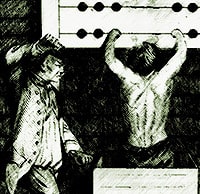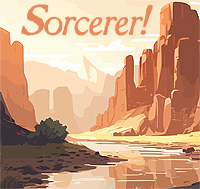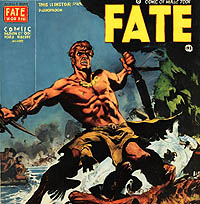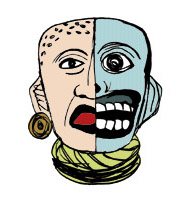1965, Bantam, NY, 120 pages
The authors were professors at the University of California at Los Angeles. This small paperback is a popular reduction of a greater work. I enjoyed the portions of this book I have read, with the 1936 painting of William Henry Jackson, looking like Bob Marley as a cowboy, a fantastic cover picture. A sparring partner of mine, a Jamaican, loved westerns, read Louis L’Amour avidly and regaled me with stories of Jamaican cowboy movies.
In my examination of Plantation America I have read as much material on black slaves as white, it being impossible to understand one condition without grasping the other. I resist concluding that academics have deliberately lied as a group about American history, with some conscious end in mind for over a hundred years. However, it is obvious that the politics of academic publishing in the past and the politics of racial polarization in main stream media today have had a toxic effect on our grasp of our own national patrimony. I have detected a pattern whereby Plantation Era authors did not belabor the obvious—that whites were held in the same conditions as blacks—and then after the end of the period American History became a narrative football passed back and forth between two false conclusions largely out of poor scholarship, and the unique intellectual laziness of the American, who sees the past only according to the current agenda that pays his salary and royalties.
What follows is a critical reading of 2 pages of The Adventures of the Negro Cowboys, as a way to demonstrate the discipline necessary to extract facts from academic fantasy. The style of the book is inspirational rather than critical. This popular literary style, with its concern for pacing, serves well the prejudices of the authors.
A decade or so before the Civil War, at a south Texas ranch, a cattleman named Bradford Grimes had his Negro cowboys [for it seems he used them exclusively, by the way it was related, but that is most improbable] breaking broncos and one was violently tossed, which moved Mrs. Grimes to scold him for risking $1,000 Negroes breaking horses, to which the gathered cowboys laughed. Left out of the text, but glaringly apparent in the subtext, is the meaning of the slave mistress’s protest, that she was telling her husband to use white or Mexican cowboys who worked for day wages and could be discarded if injured. The fact is, Negroes cost more than horses! In late stage Plantation America, a prime Negro slave was a purchase equal to buying a luxury car or working pickup truck.
On the next page, without a mention that a white man might be a cowboy, and were in fact the majority of cowboys, the authors then state that these Negro cowboys were taught their trade by Mexicans and Indians, quite ignoring the fact that these Negroes were owned by white cattlemen, rode with white cowboys, and on the previous page were, in one instance, being instructed only by a white man, Mister Grimes. This wording and the withholding of all information concerning white cowboys, their numbers relative to blacks, despite the fact that the sources for most tales of illiterate Negro cowboys were literate white cowboys, does present as an anti-white agenda, an actual attempt to erase real history with a fantasy history where all cattle bosses were white and all cowboys were people of color.
Then, as most academics do, in their mania to paint a glowing picture of their subject, they relate the fact that Negro slave holders in Texas owned Negro slaves and that all Plantation Era Negro cowboys were not slaves, some being free. Not only was Aaron Ashworth, a Negro cattleman, FREE, he owned 2,500 head of cattle; he also owned Negroes and employed a white school teacher to school his children.
Usually academics, who wish the reader to think that only blacks were slaves and that all blacks were slaves in Planation America, contradict their White = Evil narrative in the citations and end notes, but these two got so carried away with their subject they demolished their own false narrative in the next to last paragraph.
Of course, they finish weakly stating that “They worked with their white masters and with Mexican vaqueros.”
This last statement, along with earlier mentions of “all Negro crews” of cowboys is intended to lead the reader to assume that white cowboys never worked side-by side, as equals, with free Negro cowboys, or even as free to unfree coworkers, but that the only relationship between blacks and whites in the world of the cattlemen of the Old West was Master to Slave. In so stating, implicitly and explicitly, that the only white men were slave masters—which is a common thread in American letters—these elite white academics wrote the majority of working people out of American history, erased an entire race of men from their thread in the public record, in this book that sold many tens of thousands of copies.
And so our media priests continue to erase white American history and at the same time strive to convince the black reader that his history has been erased when it is better preserved than that of their white counterparts.
This is how the religious doctrine of White Privilege is used to erase our joint heritage and set us at each other’s throats.
So Her Master May Have Her Again
A History of Runaway White Slaves in Plantation America: Part Two
Stillbirth of a Nation: Caucasian Slavery in Plantation America: Part One
link › jameslafond.blogspot.com
So His Master May Have Him Again











